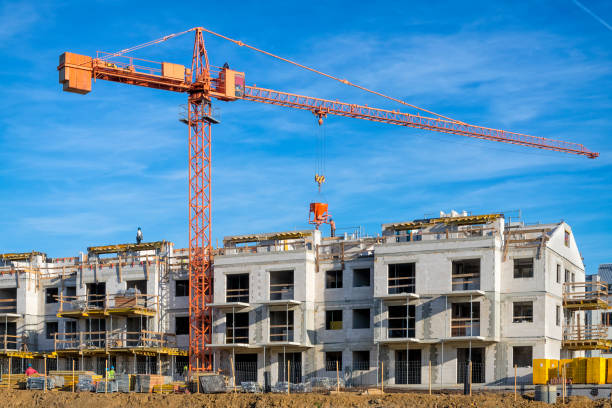Proper inspection and maintenance of rental cranes and scaffolding are crucial to ensure their safe and efficient operation on construction sites. This guide provides a step-by-step approach to inspecting and maintaining rental cranes and scaffolding, highlighting the importance of regular maintenance to prevent accidents and ensure compliance with safety regulations.
Inspecting Rental Cranes
- Check the Exterior: Inspect the crane for rent exterior for any signs of damage, such as dents, rust, or corrosion. Pay close attention to the boom, jib, and counterweights, as these are critical components of the crane’s structure.
- Inspect the Controls: Test all controls to ensure they are functioning correctly. Check for smooth operation and responsiveness, as any delay or hesitation could indicate a problem with the control system.
- Inspect the Cables and Hooks: Inspect the cables and hooks for any signs of wear or damage. Look for kinks, fraying, or corrosion, and replace any damaged components immediately.
- Check the Safety Devices: Ensure that all safety devices, such as limit switches and overload protection systems, are in working order. These devices are designed to prevent accidents and should be checked regularly.
- Inspect the Load Chart: Check the load chart to ensure that the crane is not being overloaded. Verify that the load ratings are within the crane’s capacity for the specific configuration and operating conditions.
Maintaining Rental Cranes
- Regular Cleaning: Keep the crane clean and free of debris, as dirt and grime can cause premature wear and corrosion. Use a pressure washer or hose to clean the exterior regularly.
- Lubrication: Proper lubrication is essential to prevent wear and ensure smooth operation. Follow the manufacturer’s recommendations for lubricating all moving parts, including bearings, gears, and cables.
- Inspecting Fluid Levels: Check fluid levels regularly, including hydraulic fluid, engine oil, and coolant. Top up fluids as needed and replace them according to the manufacturer’s recommendations.
- Inspecting Hydraulic Systems: Check hydraulic hoses and fittings for leaks, cracks, or other damage. Replace any damaged components immediately to prevent hydraulic failure.
- Inspecting Electrical Systems: Check the electrical system for loose connections, damaged wires, or other issues. Repair or replace any damaged components to ensure the safe operation of the crane.
Inspecting Rental Scaffolding
- Check the Frame: Inspect the scaffolding rental frame for any signs of damage, such as bends or cracks. Ensure that all locking mechanisms are working correctly.
- Inspect the Platforms: Check the scaffolding platforms for any signs of wear or damage. Ensure that they are securely attached to the frame and can support the intended load.
- Check the Guardrails: Inspect the guardrails to ensure they are in place and secure. Guardrails are essential for preventing falls and should be checked regularly.
- Inspect the Wheels and Casters: Check the wheels and casters for smooth operation and ensure that they are locking properly. Replace any damaged wheels or casters immediately.
- Inspect the Stability: Check the stability of the scaffolding by ensuring that it is level and properly braced. Use leveling jacks and braces as needed to ensure stability.
Conclusion
Proper inspection and maintenance of rental cranes and scaffolding are essential for ensuring their safe and efficient operation on construction sites. By following the guidelines outlined in this guide, construction companies can prevent accidents, comply with safety regulations, and extend the lifespan of their rental equipment. Regular inspection and maintenance are key to a successful construction project.
